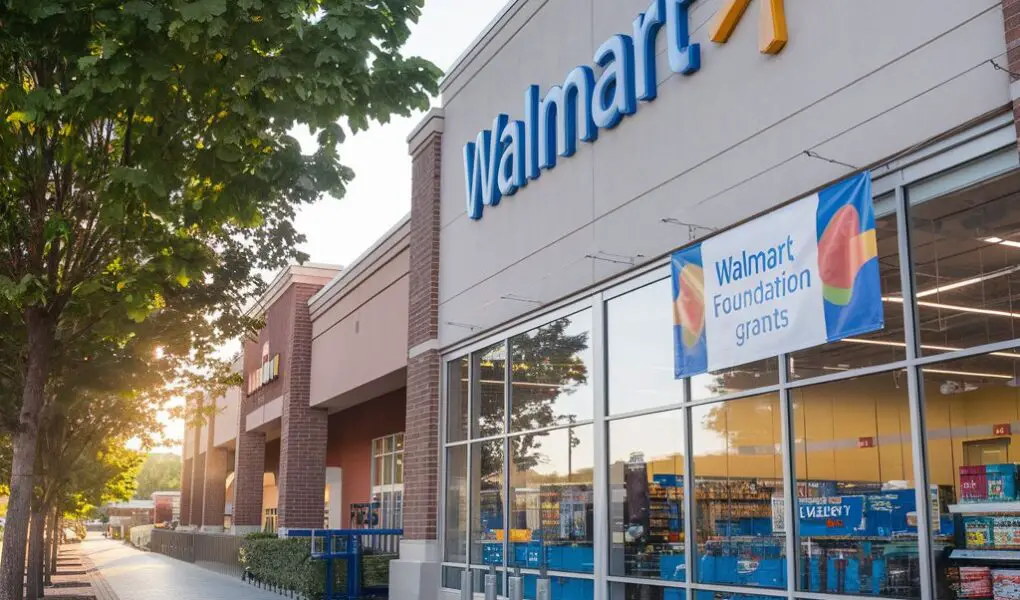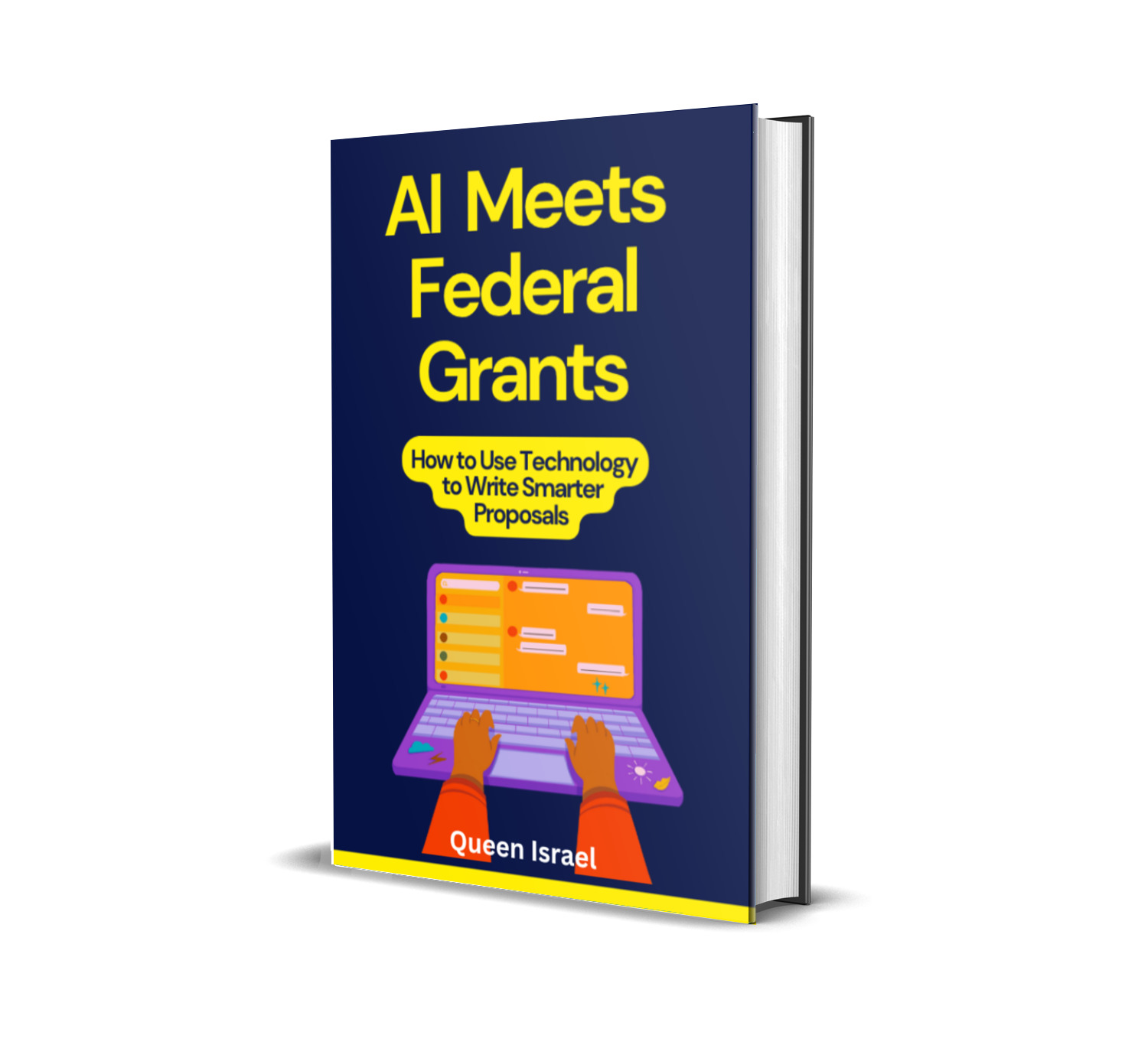Walmart school donations are part of Walmart’s larger commitment to corporate social responsibility. The company has an extensive history of supporting education and community initiatives.
For schools across the country, Walmart provides various forms of aid designed to bridge the resource gap that many educational institutions face.
Why are these donations important?
- Enhancing Education: Donations enable schools to purchase cutting-edge technology, create better classroom environments, and support innovative educational programs that might not be possible otherwise.
- Community Building: They foster stronger ties between schools and the surrounding communities, as parents, local businesses, and corporations like Walmart work together for a common goal: improving children’s futures.
- Bridging the Equity Gap: Many donations target underserved communities, helping to level the playing field for students who might not have access to the same resources as others.
As you dive deeper into the world of Walmart school donations, you’ll discover a variety of opportunities tailored to meet the diverse needs of schools. Understanding this landscape is the first step toward successfully securing funds and resources for your educational programs.
Types of Walmart School Donations
Walmart offers several donation programs, each designed to address different facets of school needs. Knowing which type of donation best fits your school’s objectives is crucial for a successful application.
Let’s dive into each one.
A) Walmart Community Grants
Walmart’s Community Grants Program is one of the most widely recognized avenues through which schools can receive financial support. These grants are designed to address specific community needs and often focus on creating measurable improvements in education and school infrastructure.
Key Features of Walmart Community Grants:
- Grant Amounts: The typical grants range from $250 to $5,000. These funds can be used for a variety of initiatives, from buying new science lab equipment to funding after-school clubs.
- Focus Areas: Grants frequently support areas such as STEM education, literacy programs, school safety, nutrition programs, and college readiness initiatives.
- Application Period: Grants are often awarded on an annual basis, with a specific window when applications are accepted. Staying informed about these deadlines is essential.
- Impact Stories: Many schools have transformed their programs thanks to these grants. For example, a school in Texas used a Walmart Community Grant to build a new computer lab, enhancing the digital literacy of hundreds of students.
Success Metrics:
- According to Walmart’s annual community reports, over $2 billion has been donated to community organizations since the program’s inception, a significant portion of which has gone to educational initiatives.
B) Walmart Foundation Grants
The Walmart Foundation offers a broader scope of support, often dealing with larger projects that require significant investment. While Community Grants may cater to more localized needs, Foundation Grants usually support comprehensive programs that can influence entire districts or regions.
What to Know About Walmart Foundation Grants:
- Larger Funding Sums: Foundation grants often involve larger amounts, sometimes exceeding $100,000 for ambitious projects aimed at systemic change.
- Collaborative Efforts: The Foundation frequently collaborates with other organizations to maximize impact. Schools might be part of a larger coalition, applying for funds as part of a community or regional project.
- Areas of Support: Grants typically focus on education equity, workforce development, college preparedness, and community health. Projects often emphasize long-term sustainability and measurable outcomes.
- Eligibility and Deadlines: The application process for Foundation grants is more rigorous, with higher eligibility standards and detailed proposal requirements. Familiarize yourself with their grant guidelines, and ensure your project aligns with their priorities before applying.
Notable Impact:
- In 2021, the Walmart Foundation awarded over $100 million in grants to organizations focused on education and workforce development, benefiting thousands of schools nationwide.
C) Product Donations and Gift Cards
Apart from monetary support, Walmart often provides product donations and gift cards that can significantly reduce the cost burden on schools. This form of donation is particularly valuable for purchasing goods that schools require regularly.
Examples of Product Donations:
- Technology Supplies: Donations might include computers, tablets, educational software, or interactive whiteboards that enhance learning experiences.
- School Supplies: Items such as books, stationery, art supplies, and sports equipment are common donations that can replenish exhausted classroom inventories.
- Nutritional Support: Food donations for school cafeterias, after-school programs, or emergency food assistance ensure that students have access to healthy meals.
D) Gift Cards:
- Walmart gift cards allow schools to purchase exactly what they need. These are particularly useful for unplanned expenses or smaller items that might not require a formal grant application.
How to Secure These Donations:
- Reach out to your local Walmart store manager. Explain your school’s needs and ask about donation possibilities. Local stores often have discretionary funds or can set aside resources for schools in their communities.
- Some schools partner with Walmart for seasonal events like back-to-school drives, where Walmart provides bulk supplies at a discounted rate or donates goods directly.
E) Volunteer Support
The Walmart Volunteer Program is a unique component of their community support strategy. Through this program, Walmart employees, often referred to as associates, volunteer their time and skills to support school activities and initiatives.
Ways Volunteers Can Help:
- Classroom Assistance: Volunteers may help in classrooms, offering tutoring in subjects like math, science, or language arts.
- Event Planning and Execution: Whether it’s organizing a school fair, career day, or fundraising event, Walmart volunteers bring energy and expertise to ensure events run smoothly.
- Mentorship Programs: Volunteers can serve as mentors, providing guidance on subjects ranging from career choices to college preparation.
- Community Outreach: Employees may help schools connect with other community resources, from local businesses to nonprofit organizations.
Benefits of Volunteer Support:
- Cost Savings: Volunteer assistance can reduce the need for paid staff, allowing schools to allocate funds to other pressing needs.
- Enhanced Learning Environment: Volunteers bring fresh perspectives and new skills into the classroom, enriching the student learning experience.
- Community Engagement: The presence of volunteers strengthens ties between the school and the community, fostering a collaborative environment.
How to Apply for Walmart School Donations
Navigating the application process for Walmart donations may seem daunting at first, but breaking it down into manageable steps can simplify the journey. Here’s a detailed guide to help you apply effectively and increase your school’s chances of securing funding.
A) Researching Opportunities
Before jumping into the application process, it’s crucial to research available opportunities thoroughly. This step involves identifying which Walmart donation programs align best with your school’s needs.
Action Steps:
- Visit the Official Websites:
- Check the Walmart Giving page for up-to-date information on available grants and donation programs.
- Explore the Walmart Foundation’s website for detailed guidelines on foundation grants and application deadlines.
- Review Past Recipients:
- Look for success stories or case studies of other schools that have received Walmart donations. These stories can offer insight into what worked well, what challenges were overcome, and which areas Walmart is keen to support.
- Join Online Forums and Networks:
- Engaging with communities of educators or grant writers on platforms like LinkedIn, Facebook Groups, or specialized forums (like GrantSpace) can provide insider tips and advice from those who have successfully navigated similar applications.
Key Points:
- Understand different types of grants and their specific focuses. For instance, Walmart Community Grants might have a focus on immediate, localized needs while Walmart Foundation Grants could cover broader initiatives.
- Stay updated on deadlines. Many grant programs have specific application windows which, if missed, mean waiting for another year.
B) Eligibility Requirements
Once you’ve identified a suitable program, the next step is to determine if your school meets the eligibility requirements. Each program has specific criteria that must be met for an application to be considered.
Common Eligibility Criteria:
- Nonprofit Status: Schools may need to be recognized as a 501(c)(3) organization or have similar nonprofit status to apply for certain grants.
- Geographical Location: Some Walmart donation programs may be limited to specific areas or communities. Check if your location qualifies.
- Program Focus: Grants may prioritize specific educational programs, like STEM initiatives, literacy improvement, or community health. Ensure your project aligns with these focus areas.
- Documentation: Be prepared to submit proof of nonprofit status, tax identification, and documentation of how previous funds were used effectively.
How to Verify Eligibility:
- Review the application guidelines on the relevant Walmart webpage.
- If unclear, contact the Walmart community relations office or the grant administrator for clarity on eligibility.
C) Preparing a Compelling Application
Your application is your school’s opportunity to make a compelling case for why Walmart should invest in your students. A well-prepared application is clear, concise, and backed by data.
Steps to Prepare:
- Clearly Define Your Need:
- Begin your application by stating the specific need. For example, “Our school needs new laptops for our computer lab to support the growing demand in STEM classes.”
- Outline the Impact:
- Describe how the donation will directly benefit students and the community. Use concrete examples and statistics, such as improving literacy rates, increasing graduation rates, or enhancing college readiness.
- Provide a Detailed Budget:
- Break down how every dollar or donated item will be used. A transparent budget builds trust and shows that funds will be managed responsibly.
- Use Data and Evidence:
- Back up your request with data. For example, mention survey results that highlight the need for a new library or cite success metrics from a pilot program requiring additional funding.
- Include Testimonials and Letters of Support:
- Attach letters from community members, parents, or local businesses supporting your cause. Testimonials from previous grant recipients can also strengthen your application.
Key Considerations:
- Keep the tone conversational and passionate, but remain professional.
- Highlight keywords such as Walmart Community Grants, school funding, and educational support. This not only aligns with search engine queries but also reinforces Walmart’s priorities within your narrative.
- Use a friendly, approachable writing style that resonates with reviewers and community members alike.
Submission Tips and Best Practices
Submitting your application correctly and on time is as important as the content of the application itself.
Best Practices:
- Double-Check Guidelines: Ensure that you’ve followed every guideline in the application instructions—missing documents or formatting issues can disqualify a proposal.
- Meet the Deadline: Submit your application before the deadline. Early submission demonstrates preparedness and enthusiasm.
- Follow-Up: After submission, don’t hesitate to follow up with the grant manager or contact person to confirm that your application was received and to inquire about the next steps.
- Maintain Copies: Keep copies of all submitted documents. If you need to reference them for follow-up questions or for future applications, they will come in handy.
Maximizing Your Chances of Success
Competing for Walmart school donations can be challenging, but strategic planning can increase your chances. Below are key strategies that schools have used successfully.
A) Aligning with Walmart’s Mission
Walmart’s community initiatives often focus on education and community development. When writing your proposal, it’s essential to align your school’s needs with Walmart’s mission and the goals of their donation programs.
How to Align:
- Research Walmart’s Values: Familiarize yourself with Walmart’s core values such as diversity, inclusion, education, and sustainability. Reflect these values in your proposal.
- Tailor Your Proposal: Highlight how your school’s project promotes STEM education, employment readiness, community health, or other areas Walmart is passionate about.
Example: If your proposal seeks funding for a new computer lab, connect this request to Walmart’s goal of supporting technology education and preparing students for future workforce challenges in retail, technology, or related fields.
B) Building Relationships
Building personal relationships with key decision-makers at Walmart, both at the local store level and in the corporate sector, can significantly enhance your application’s prospects.
Tips for Relationship Building:
- Local Outreach: Visit the local Walmart store to meet the manager or community liaison. Establishing a face-to-face connection can make future communications smoother.
- Networking Events: Attend community events sponsored by Walmart or join local business networks where Walmart representatives might be present.
- Consistent Communication: Keep the lines of communication open. Update your contacts on your school’s progress, successes, and ongoing needs—even after receiving a donation.
C) Developing a Clear Plan
A clear, structured plan for how donations will be used reassures Walmart that their investment will yield tangible results.
Components of a Clear Plan:
- Goals and Objectives: Outline what you aim to achieve with the funds or donations. Be specific and measurable.
- Implementation Timeline: Provide a timeline that details each phase of the project, from procurement to execution and evaluation.
- Measuring Impact: Describe how you will track the success of the initiative. Will it be through improved test scores, increased technology use, or another metric?
- Sustainability: Explain how the benefits of the donation will last beyond the initial period of funding.
D) Seeking Long-Term Partnerships
Rather than a one-off donation, schools should strive to forge long-term partnerships with Walmart. These relationships can lead to consistent funding, more in-depth programs, and a more sustainable impact on the community.
Advantages of Long-Term Partnerships:
- Consistent Support: Ongoing programs and projects are more sustainable with regular funding.
- Deeper Impact: Long-term investments allow for comprehensive programs that evolve as the needs change.
- Increased Trust: A sustained relationship builds trust and mutual understanding, which can benefit both Walmart and the school.
How to Foster Long-Term Relationships:
- Provide regular updates and success stories to Walmart, showing the positive outcomes of their donations.
- Invite Walmart associates to special events or school tours to witness the impact firsthand.
- Explore collaborative projects that align with both the school’s goals and Walmart’s community objectives.
Harnessing the Power of Volunteers
One of the most unique and impactful aspects of Walmart’s community outreach is the volunteer support provided by its employees. These volunteers can be a tremendous resource for schools.
Benefits of Volunteer Involvement:
- Diverse Skill Sets: Walmart associates come from varied backgrounds, offering a range of skills from technology expertise to event planning.
- Role Models for Students: Volunteers can serve as mentors and provide guidance and inspiration to students.
- Extra Hands: Whether it’s organizing a fundraiser, refurbishing a classroom, or leading a workshop, volunteers can make a significant difference.
Strategies to Leverage Volunteers:
- Identify Needs: Determine where volunteer support could have the most impact, such as tutoring, mentoring, or event support.
- Clear Communication: When inviting volunteers, outline what you’re looking for, the time commitment required, and the skills needed.
- Recognition and Appreciation: Recognize the contributions of volunteers through thank-you letters, certificates, or school newsletters. This encourages ongoing support and builds a positive volunteer culture.
Real-Life Success Stories
Understanding how other schools have successfully navigated the world of Walmart school donations can provide inspiration and practical lessons.
Case Study 1: A STEM Lab Transformation: A middle school in Ohio applied for a Walmart Community Grant to upgrade its science lab. The school was struggling with outdated equipment, which hindered its STEM curriculum.
The grant application highlighted the importance of modernizing the lab for future STEM professionals and included data on student interest in science programs, curriculum goals, and partnership plans with local science organizations.
With the grant funds, the school purchased new lab equipment, installed interactive whiteboards, and even secured additional volunteer hours from Walmart associates for after-school tutoring sessions. The result was a significant increase in student engagement and achievement in science subjects, with test scores rising by 15% in the following academic year.
Case Study 2: Technology for All: A high school in California sought donations for computers to bridge the digital divide in a low-income community. Partnering with a local Walmart store, the school applied for product donations and received tablets, laptops, and network equipment.
These resources improved classroom learning and enabled the school to implement online learning modules during inclement weather and the pandemic. Data collected showed a 30% increase in digital literacy among students and a boost in confidence using technology for research and creative projects.
Additional Resources and Tools
Navigating the complexities of grant applications and community partnerships can be overwhelming. Here are some resources to assist you further:
- Grant Writing Tools: Use templates, checklists, and guides from reputable sources like GrantSpace or Foundation Center.
- Education Funding News: Subscribe to newsletters and follow blogs that share success stories, funding news, and new opportunities.
- Local Chambers of Commerce: Often, they have connections with community businesses like Walmart and can offer advice on approaching corporate donors.
These resources can help refine your approach, strengthen your proposals, and ensure you’re always aware of upcoming deadlines and opportunities.
Final Thoughts:
Walmart school donations offer a robust opportunity for schools to secure necessary funding, resources, and volunteer support. By thoroughly researching available programs, carefully preparing applications, and strategically building relationships with Walmart representatives, schools can increase their chances of obtaining the support they need to thrive.
Remember, success in securing donations often comes from a blend of clear communication, strategic planning, and genuine passion for educational improvement. Keep refining your approach, learn from past experiences, and never underestimate the power of a well-crafted proposal aligned with Walmart’s values.
Subscribe to Grant Writing Academy Newsletter
If you want to learn more about securing grant funding, building stronger applications, and accessing tools that can boost your school’s chances of success, subscribe to the Grant Writing Academy Newsletter.
Here, you’ll gain access to tips, strategies, templates, and tools designed to enhance your success rates. Whether you’re a seasoned grant writer or just starting out, our resources will help you unlock funding and make your school’s vision a reality.
Subscribe today and take your grant writing to the next level. Your journey to mastering the art of grant applications begins now!




